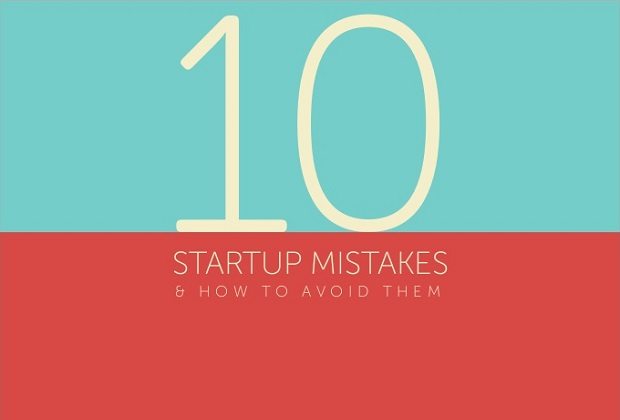
Laurence McCahill from digital product specialists Spook Studio highlights some common early-stage pitfalls, with some guidance on how you can avoid them
1. No clear vision or purpose
This should be the starting point for any startup founder, but it’s often overlooked. Too often people dive straight into their shiny solution ideas without thinking about why they’re doing what they’re doing or considering the change they want to see in the world.
Without a clear purpose, a startup can meander along without much momentum. And when things get tough (which they inevitably will), you won’t have much to pull you or your team through. Having a clear purpose adds some real meaning to your work, and a cause that people can rally around. It can also give your brand real weight as it has a reason for being, so it’s worth spending time shaping and articulating this. Here are two examples. Notice there’s no mention of a product anywhere:
“To be the pulse of the planet” — Twitter
“To be the earth’s most customer-centric company” — Amazon
Simon Sinek points out in his renowned TED talk ‘How great leaders inspire action’ that you need to awaken an emotion with your early customers so that they feel something, come back for more and, most importantly, tell their friends about you. He points out that most buying decisions are based on emotion, rather than logic. This is where the Golden Circle comes in.
“People don’t buy what you do, they buy why you do it”
If your customers believe in your mission – i.e. what you believe and where you’re going – then they’ll warm to you and listen to what you do and how you do it. By focusing on the ‘why?’ in business we can create much deeper connections with our audience and give our startups a better chance of success.
I recently created a framework for early-stage startups to define their startup DNA and lay some foundations for a sustainable business. I’m hoping this will help to save entrepreneurs time in their hunt for success, whilst adding some more meaning to their businesses.
2. A lack of focus
If there’s one thing that startups are often guilty of, it’s trying to do too much, too soon. Having a clear focus means it’s easier to communicate what your product is and who it’s for. By trying to appeal to everyone and adding features left, right and centre, you will actually dilute your message and could end up with a complex, bloated product. Take lead from success stories such as Dropbox and Instagram by doing one thing really well.
It’s not as easy as it sounds. Often there can be pressures from customers, investors or other team members, but learning to say no is something you’ll need to get to grips with if you want a usable product. Get the core right and you’ll make your life a lot easier.
One thing we make a point of doing with each product we work on at Spook Studio is to make a list of things we won’t do. This helps to add some constraints to the development process as everyone has a clear idea of what the product isn’t. In this way we can make better decisions and not take our eye of the ball.
It takes discipline to stay on track and not lose focus, but it’s a valuable trait that all successful entrepreneurs seem to have.
3. Design as an afterthought
Mistakenly, startups often don’t see value in investing in design. This is a missed opportunity.
In the startup world there’s been a culture of solution or technology first, whereas I believe we should be taking a more people-centred approach to building products and services. Unless the thing you’re building has real value to someone, it’s just a vanity project, no matter the technology. Whilst the tide is turning, there’s still a need to educate startup founders about the competitive advantage well-designed products and services can bring. I founded a regular design meetup for startups, UX Café, for this reason.
It’s been proven that there’s a direct correlation between a positive user experience and loyalty. Happy customers tend to spend more, more often and tell their friends. I see design as a direct route to free marketing through the positive word of mouth it helps to generate. People are now more savvy than they were even five years ago and won’t put up with a poorly designed product or service if there’s a better alternative. I believe your customers’ experience is the main contact with your brand so it’s key to really work at this. If it creates a negative emotion, they’ll more than likely never come back (or even worse use their network to harm your brand through a bad review).
The designer Wells Riley also felt that startups and design weren’t best of friends so he created ‘Startups, this is how design works’. It’s a great starting point for any startup founders that just don’t get design.
4. Building something nobody wants
The right product is simple, compelling, and aligned with the business model. Often though, you’ll come across websites or apps that look nice and appear on the surface to have a good experience, but as you delve deeper and use them more there’s no obvious value to the user. Either the problem they’re trying to solve isn’t actually a big enough problem for many people, or the solution being proposed doesn’t hit the right note to gain significant traction.
First make sure that you’re building the right product for your audience before perfecting the experience. Also before you build your product, have a discovery phase where you explore the market, test your riskiest assumptions about your audience and discover any new and potentially more lucrative opportunities.
Most business ideas are based on a set of assumptions made by the founders and without rigorously testing these you’re significantly reducing your chances of success. Many business disasters could have been avoided simply by talking more to their customers and stakeholders. It’s your responsibility to discover a product that is valuable and desirable. It makes no sense to proceed to building something until you have evidence that you have discovered the right product. In the words of Ash Maurya ‘life’s too short to build something nobody wants.”
5. Chasing investors, not customers
Just because you have a great idea, this doesn’t mean that you’ll get funding. One of the safest ways to ensure survival for your startup is to have a business model that lets the product pay for itself. I come across so many startups that are way too focused on building a pitch rather than building a business. Forget funding and find a customer that will pay for your product. Then find another, and another. Get some customers and investment will come a lot easier.
Also, if you are looking for investment, focus more on clarifying your product vision and story and less on the (made up) numbers. If you’re a true entrepreneur you should be worrying about the things that you can control (building a great product and keeping customers happy) than things you can’t (chasing VCs, angel investors, etc).
6. Too much talking, not enough listening
Perhaps it’s because funding is so important to early-stage startups that they soon get good at perfecting their sales pitch. Great if you’re looking for funding, not so good if you’re on the search for product-market fit. Without a proven business model you’re in danger of missing opportunities that arise from just opening your ears and listening to what people have to say.
When we’re exploring the opportunities for a new product idea, we conduct some customer interviews without ever mentioning a solution. The aim of this is to better understand potential customers and their world, to find out whether the problems we’re looking to address are a pain for them too. Introducing a solution early on can lead the conversation too much and mean missed opportunities.
Whilst sales are the lifeline of any startup, the key is really understanding your customers’ problems before selling. In the words of Artefact Cards founder John Wilshire ‘make things people want, not make people want things’.
7. Launching too late (or too early)
Too many startups spend months (or years in some cases) in ‘stealth mode’, hidden away from prying eyes, and end up never releasing at all as uncertainty and competition spoil the show. Equally there are others that launch a poor early version of their product in true lean startup style. However if it’s not ‘minimum awesome’, don’t release it. Make sure there’s a base level of design and usability across all features otherwise you might not get the outcome you’re hoping for. Getting the balance right between launching early and creating the perfect product is no mean feat, but one that could pay dividends.
Your first release is just the beginning, not the end. Learn from real world use, iterate and improve as you go, but don’t throw features at it. Focus on optimising the core product before adding more.
8. Failing to ask for help
Entrepreneurs can be a stubborn lot. There’s no harm in asking for help early on, but too few do. There are advisors out there that want to help you, and not just to fill their own pockets. Why make your own mistakes when others that have tread before you can help steer you in the right direction?
Accept that you don’t know everything and ask for help when necessary (or even before). It can feel a lonely place as an entrepreneur, so the more you can talk about your challenges as a business, the better your position will be when opportunities arise.
Spend time finding a good mentor who you can trust and who has a genuine interest in the success of your venture. Find the right person and it can be a win-win.
9. No growth plan
Build it and they will come. Or not, as is usually the case. Customer acquisition ultimately makes or breaks any start-up.
Serial entrepreneurs understand that 90% of entrepreneurship is about sales and marketing, although now we have a new kid on the block – growth hacking. Whilst there’s real value in growth hacking it does feel a little like the lean startup movement – that is, now it has a ‘brand’, everyone will be jumping on the bandwagon claiming to be a growth hacker.
Ultimately the aim of any startup founder should be to find a customer for their product and access to a bigger market that means scaling is a possibility. Even the greatest product ever made is only half the story – finding customers, gaining significant traction and reaching the tipping point is the other part of the journey that we don’t always hear about. Every successful product out there has had some form of hustling to progress. Airbnb famously poached property owners posting their houses and apartments from Craiglist to gain traction. What are you doing to drive awareness and generates sales for your startup? Be bold, be clever. Often the best growth hacks are the cheapest.
10. Hiring badly
Startups that get funding early often make the mistake of hiring people too soon, before they’ve really worked out the sort of person they’re looking for. It’s seems that every other budding entrepreneur out there is searching for a co-founder, but in all the wrong places. Just as you won’t meet your future spouse in a nightclub, you’re unlikely to meet your long-term business partner at a co-founders speed dating night. This all comes down to pinning down your startup DNA. If you have a strong vision, story and set of values that drive you, then you’ll know the sort of person that will be the right fit. No talented developer/designer/hacker is going to want to work until they sweat unless they have a real bond with you and believe in your startup purpose.
I recently came across the work of Javier Muñoz, co-founder, happiness designer and trainer at Delivering Happiness in Spain. In his own words:
“We are presenting the Culture Canvas in the startup community so they can use this tool to model their culture from the start. Modelling a minimal viable culture and assessing whether there is a product-culture fit is vital even if you are dealing with a two-founder startup. It is also important for proven startups that are looking to scale their business.”
I can see this becoming a more widely used tool as startups realise the business benefits of having a strong culture and engaged employees. All the research points to happy teams making more money, so organisations are switching on to this. Startups are next.
In Summary
Follow these 10 tips and you’ll be on the right track:
Define your startup DNA
Keep the main thing, the main thing
Bring design on board from day one
Validate ideas early and test assumptions
Build a business, not a pitch
Stop selling and start listening
Get the balance right between MVP and perfection
Get a mentor and build your support network
90% of entrepreneurship is sales. It’s time to start hustling.
It’s all about people. Hire the best you can
About The Author – Laurence McCahill
Laurence McCahill is co-founder of digital product specialists Spook Studio. He works with entrepreneurs and changemakers to help them bring their ideas to life, creating products that customers love. He also runs UX Café and The Happy Startup School.


























